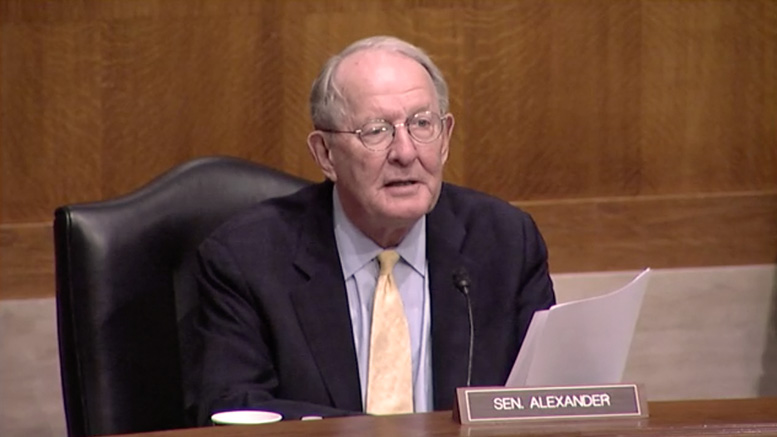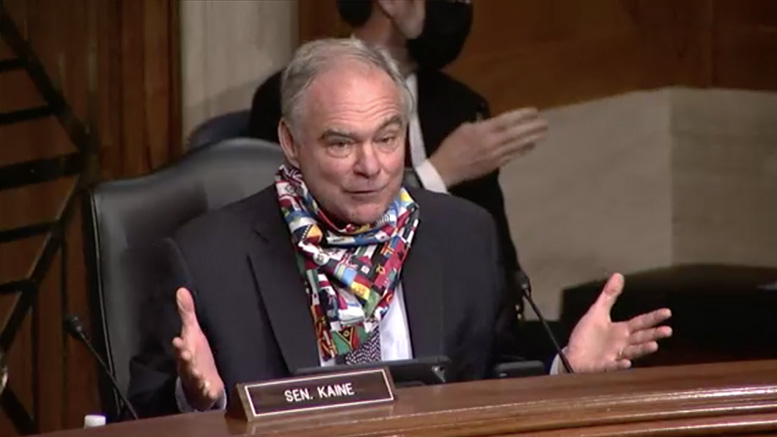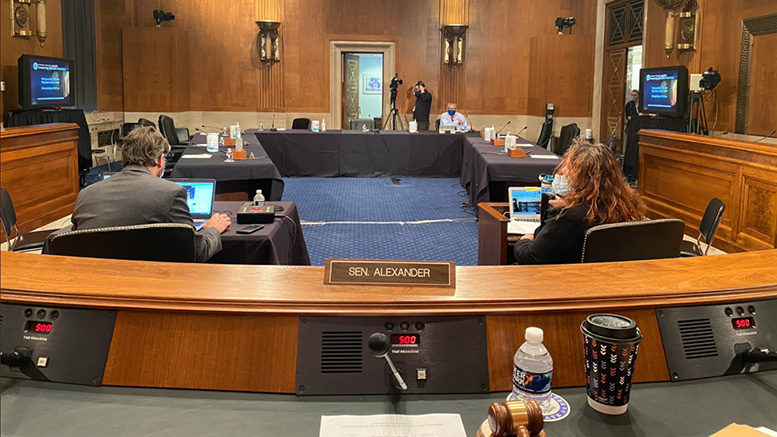Community colleges weren’t represented at a Senate hearing Thursday on how colleges and universities plan to safely reopen campuses, but many concerns of the two-year college sector were addressed during the virtual meeting.
The Senate Health, Education, Labor and Pensions Committee discussed a wide range of issues related to opening campuses during the coronavirus pandemic, from testing students for the virus and equity issues pertaining to employees, to providing limited liability protection for colleges as well as protection for college athletes and sports fans.
Since there is such variety among colleges and universities in their size, location, facilities and more, it will be up to individual institutions in consultation with state governors and local health departments on how to develop safety plans, said Sen. Lamar Alexander (R-Tennessee), who chairs the committee.
But there is one thing all college plans will likely include: testing.
“All roads back to college lead through testing,” Alexander said. “The availability of widespread testing will allow colleges to track and isolate students who have the virus or have been exposed to it, so the rest of the student body doesn’t have to be quarantined.”

How colleges plan to do the testing will vary. Some are considering random tests of students, while others plan to test all students throughout the academic year. Brown University is even considering testing wastewater for the virus, President Christina Paxson told the committee.
There is also the question of having the resources for the tests. Alexander recommended that colleges should seek to have their testing needs included in their state’s plan. If the needs exceed what the state can provide, the federal government can then help, he said. The senator added that colleges can also contract directly with laboratories that conduct tests, review the Food and Drug Administration list of authorized tests, or ask for help from a nearby university or hospital that has created its own test.
But Democrats pointed out that, even though testing is a major part of any plan to reopen a campus, there’s no testing protocol in the comprehensive guidance for higher education institutions from the Centers for Disease Control and Prevention (CDC).

“There’s not a single mention of testing in the document that the CDC currently has to give to out universities,” said Sen. Tim Kaine (D-Virginia). “If you’re going to give a university guidance about how to make sure the water system is safe, or how to limit the size of activities, or what to do when a student is sick, it would seem like you would give them some guidance, some recommendations, about testing protocols.”
Plan for a case on campus
All institutions should be working from the premise that they will have a case of COVID-19 on campus during the academic year, said Georges Benjamin, executive director of the American Public Health Association. They should also assume that while students are less likely to have serious disease when infected, the risk is not zero.
Institutions should evaluate how to handle the full range of people who teach, work or attend the campus, Benjamin said. This will be particularly important for individuals with underlying health risks.
“If you don’t have plans for that, it will be, at best, a mess,” Benjamin said.
He added that because the return to school proceeds the start of influenza season, colleges also should have in place a process to identify and screen flu-like illnesses to differentiate between COVID-19 and influenza.
Unequal impact and needs
Several Democrats on the committee noted the importance of addressing systemic inequalities that have placed many minority students, faculty and staff at greater exposure to the virus as well as its effects on their ability to complete college and attain jobs. Many low-income and minority students already faced hardships that have been compounded by the pandemic, said Sen. Patty Murray (D-Washington).
Logan Hampton, president of Lane College, a historically black four-year institution in Jackson, Tennessee, called on Congress to double the Pell Grant maximum to help students most in need – which other presidents on the panel supported. He cited a survey at his college that indicated 78 percent of students asked for funds for food and 73 percent asked for funds for housing.
Hampton also requested lawmakers to invest an additional $1 billion in emergency funding for historically black colleges and universities, tribal colleges and universities, and minority-serving institutions. This would be in addition to $1 billion provided to those institutions through the CARES Act. He said his college would use those funds to: increase the technology infrastructure on campus; help students with personal technology; pay for wifi or provide wifi for students; hire staff to train faculty and students to deliver and receive online instruction; and help students with food and housing.
Debt but no credential
Sen. Susan Collins (R-Maine) noted that she was concerned if colleges do not reopen this fall, it could increase the number of college students with some college but no credential. She asked the panel members for their opinions about expanding programs such as federal TRIO programs, which in Maine serves more than 7,300 students by providing services that encourage students to stay in college and earn a credential.
Brown’s Paxson added that if colleges close, it may also be difficult for students at those institutions to find other colleges where they can complete their degree.
“We need to keep a close eye on persistence in education and degree completion, especially during this time,” she said.
Seeking liability protection
Colleges and universities are also seeking temporary liability protection related to the pandemic. However, some organizations representing students and labor are pushing back on that, and Sen. Elizabeth Warren (D-Massachusetts) said the request from higher education is too broad.
But Brown’s Paxson noted that colleges are trying to address all aspects of opening a college and keeping everyone safe during a pandemic that is unprecedented. All colleges are taking precautions but they are concerned about potential class-action lawsuits, which could draw on an institutions’ already limited resources, she said.

